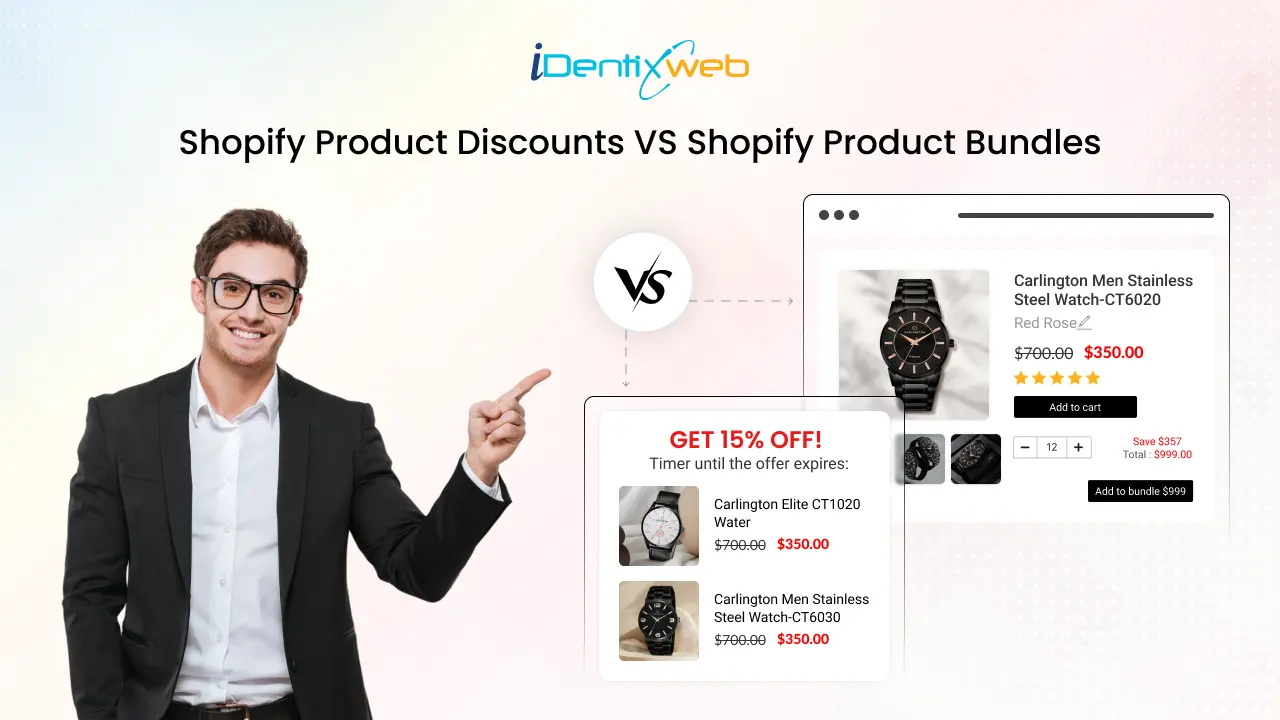
Smart upselling is one of the most popular sales techniques that encourage customers to purchase a higher quality or a better version of a product or a service with a little extra cost. It is an effective way for companies to increase sales, revenue, and average order value (AOV).
In this article, we will learn about two main strategies that businesses use when they upsell in Shopify: Discounting and Bundling. However, for a majority of companies, it gets a bit tricky to decide when and where which strategies they should adopt to upsell on Shopify.
Let’s simplify it here:
Understanding Discounting
You might already know, discounting means reducing an item’s price. But let’s delve into a little more depth.
Definition of Discounting
Discounting is a subtle strategy that involves deliberately lowering the price of the products or services to attract customers. When used effectively, it can nudge shoppers into buying additional items they didn’t plan to purchase or opting for a more expensive version of what they originally intended.
Types of Discounts
There are numerous discount types available to tempt shoppers to make purchases. Let’s explore the top three types of discounts:
- Seasonal discounts
- Quantity Discounts
- Promotional Discounts
Seasonal discounts are a proven way to drive sales during specific times of the year, such as holidays, festivals, or product launches. The key to success lies in timing and well-structured terms and conditions. According to Adobe’s 2024 Holiday Shopping Report, seasonal discounts led to an additional $2.25 billion in online sales across multiple retail categories.
Example: Nykaa offers up to 30% off on sunscreens as summer approaches.
Incentives that lower the cost per unit of products or services when purchased in large quantities are known as quantity discounts. These discounts come in different forms, such as BOGO (Buy one, Get one free), bulk order discounts, or incremental discounts.
For example, ‘La Pino’z Pizza offers a buy one, get one free (BOGO) on a large pizza, and similarly ‘Nestasia’ offers an incremental discount on purchase of two products.
Promotional discounting is a sales tactic of decreasing the cost of a product for a limited period of time to pull in customers. By cutting the cost temporarily, the company deliberately raises the product’s worth and generates a sense of scarcity. Flash sales, coupon codes, and exclusive deals all fall into this category. According to George from Clipping Path, “We regularly run sales on our platform and that always gives us new customers.”
Example: Aldo runs a 48-hour Flash Sale with 48% off storewide.
Advantages of Discounting
- Attract New and Loyal Customers
- Clear Out Unsold Stock
- Improve Average Order Value
Limited-time discounts help businesses gain new buyers while fostering loyalty. Loyal customers spend 67% more than new customers so, promoting customer loyalty discount programs, further helps increase ROI and MER.
Reducing the price of an unsold product might be the only way to generate customers’ interest in buying it.
Discounts, urge customers to check out additional products, thereby improving the average order value (AOU) and sales.
Disadvantages of Discounting
- Decreased Brand Value
- Loss of Revenue
- Price-sensitive Buyers
With regular discounts, customers might perceive your products as of poor quality. This can soon create a negative impact on the brand image.
When a company routinely gives discounts, it might have to increase its advertising and promotional efforts which could impact the company’s budget especially if the discounts are insignificant or are offered regularly.
Many discount-driven customers only shop during sales, making them less likely to purchase at full price. When discounts are removed, they may switch to competitors.
Choosing the right eCommerce platform can be a game-changer for integrating smart upselling techniques, as it unifies inventory, marketing, and customer experience tools under one roof. By leveraging the unique features of a well-suited platform, you’ll create streamlined discounting and bundling campaigns that keep customers engaged and drive repeat sales.
Understanding Bundling
Product bundling can be an effective strategy to upsell in shopify and other e-commerce applications or platforms. It’s not just merely about selling extra products- it’s about crafting combinations that are compelling to your customers. One great example is using a product bundle Shopify app to combine complementary items and offer them at an attractive price, encouraging customers to add more to their carts without hesitation.
Definition of Bundling
Bundling is a marketing approach in which a seller combines various items or services and sells them together as a single bundle, usually at discounted rates. This strategy is also applicable to an LMS platform, where various learning resources or services can be packaged together. In most cases, the price of an LMS platform bundle is less than the cost of purchasing all items separately.
Types of Bundling
The different types of bundling include:
- Pure Bundling
- Mixed Bundling
Pure bundling is a practice of combining several items into one cohesive package that is offered for sale as a single item with no choice for a separate purchase.
Example: The Philips Multi-Styler only sells the straight, curl, and crimp detachables as a part of the multi-styler pack. Individual sale of these detachments is not possible.
Mixed bundling gives customers the option to buy things separately while also providing a bundled product.
Example: A laptop search result on ‘Amazon’, also shows a bundled option including a laptop, laptop bag, and a keyboard protection film.
Advantages of Bundling
- Promote New Items in a Bundle
- A Higher Average Order Value
- Minimized Marketing Costs
Bundling a new product with a best-seller increases its exposure. Customers who trust the popular item may be more inclined to try the new one.
By encouraging customers to purchase multiple items once, bundling boosts AOV and overall revenue.
When you bundle products in Shopify, you pay for the entire package rather than each item separately, which increases sales and lowers marketing and distribution expenses like storage, packing, and shipping.
Disadvantages of Bundling
- Product Cannibalization
- Negative Customer Opinion
If a high-margin product is sold in a bundle at a discount, it may reduce overall profitability compared to selling it individually at full price.
Customers could perceive bundled items as low-quality and might think that the company intentionally bundled them to get rid of outdated or extra products.
Comparison of Key Differences Between Discounting and Bundling
Both discounting and bundling are effective upselling strategies, but they serve different purposes and impact revenue in distinct ways. Here’s a quick comparison of their key differences:
| Features | Discounting | Bundling |
|---|---|---|
| Definition | Reducing the cost of a single item or service. | Combining multiple products/services in a bundle and selling at a single cost. |
| Goal | Increase sales and revenue by attracting new and loyal customers. | Encourage bulk purchases and increase the perceived value of the offer. |
| Impact on Revenue | Profit per unit may decline, but more sales can increase overall income. | Encourages customers to buy more products at once, increasing total sales. |
| Risks | It can make the thing less valuable for the customer if it is always on discount. | Consumers may not desire every item in the bundle, leading to a loss of sales. |
When to use Discounting?
While discounting can be an effective strategy, offering discounts too frequently may harm your brand’s value. So, when is the right time to offer discounts? Here are some ideal scenarios:
Minimum Order Discounts
Discounts can be applied when the customer reaches a specific threshold order amount. This way you can encourage customers to buy more.
First-order or Signup Discounts
To attract new customers, many businesses offer first-time discounts or exclusive deals upon sign-up to encourage conversions.
Example: Adidas offers a 10% discount to customers upon sign-up.
Another effective tactic to attract new customers is running a referral program. With apps like ReferralCandy, you can reward existing customers for referring friends — offering both parties a discount or reward. This not only incentivizes word-of-mouth but also builds long-term brand loyalty alongside your discount strategies.
Clearance Discounts
In case you have large inventories left or need to clear old/extra stock, then you can apply stock clearance discounts which are one of the most effective strategies to attract customers.
For such scenarios, Shopify offers ‘Shopify automatic discounts’ that apply automatically at checkout or when the items are in the cart.
Discounts on Special Occasions
Special occasions such as your store anniversary, women’s day, or even your customer’s birthday/anniversary could be made special by offering discounts to celebrate with customers and give them another reason to shop. Using email template creators, you can easily design and personalize engaging emails to inform customers about these exclusive offers.
Example: Artfelt, a website for art therapy and counseling, offers a 20% discount on its first anniversary.
Best Practices for Discounting
Use Limited-Time Deals
Adding a time limit to your discounts creates a sense of urgency and drives conversions. 60% of millennial customers admit to making impulse purchases due to FOMO (Fear of Missing Out).
Leverage Product Bundling
Instead of simply reducing prices, offer discounted bundles to increase perceived value and encourage multiple purchases.
Offering Tiered Discounts
Encouraging higher spending with tiered discounts may incentivize customers to spend more to receive a larger discount. A 10% on a purchase of $50 and a 20% discount on a purchase of $100 or above could motivate customers to add more items to their in cart.
When to Use Bundling?
Bundling works best when it provides added value to customers while increasing sales. Here are the ideal scenarios where you can consider bundle products in Shopify to be most effective:
Complementary Products
The complementary items in your product line can be bundled together to guarantee sales like shoes and socks or a burger with fries.
Introducing New Products
Launching a new product? Bundle it with an existing, popular product at a slight discount to encourage trial and boost sales.
A new smartwatch bundled with a wireless charger to encourage customers to try the new accessory.
Enhancing Customer Experience
A seamless and personalized shopping experience isn’t just great for customer satisfaction—it’s also a powerful upselling tool. By recommending smart product bundles based on past purchases or browsing behavior, you can subtly guide customers toward higher-value options without seeming pushy.
To make these recommendations even more accessible and engaging, consider integrating text to speech (TTS) technology into your Shopify store. TTS can read out bundle descriptions, assisting visually impaired shoppers and offering a hands-free browsing experience on mobile—both of which encourage deeper product exploration and increase the likelihood of add-on purchases.
Additionally, using QR codes on product packaging, in-store displays, or order receipts can create interactive touchpoints. Customers can scan the code to discover curated bundles, how-to guides, or exclusive upsell offers—bridging offline and online shopping journeys while keeping the experience personalized and conversion-focused.
Best Practices for Bundling
Create a Bundle Based on Marketing Strategy
Consider factors like seasonal demand, product sales performance, and promotional campaigns when designing bundles.
Determine the Interests of Audience
Segment customers based on spending habits and purchase behavior to create bundles that resonate with their needs. One approach is to offer a product quiz, built with a tool like Youform, that helps shoppers find the best bundle for them and rewards completion with a discount code. To maximize the effectiveness of discounting and bundling strategies, businesses should consider localization and translations to ensure their offers resonate with customers across different regions and languages.
Promote Customer Savings
For most customers, finding a product that matches their budget is the first priority. Therefore, promote and highlight the customer savings from bundled products.
Effectively Market Your Bundles
Use social media, free email marketing campaigns, and website promotions to highlight the benefits of your bundles. Online retailers with an active social media presence attract 32% more sales than those without. To further boost your online engagement, consider integrating social media automation tools that can streamline your marketing efforts and enhance your reach.
Ready to Upsell Your Business?
Using discounts and bundling strategies could enhance your key motive to upsell. But when creating upsell opportunities it’s always crucial to take customer experience into account.
Knowing your consumers well, gaining their confidence, and providing the right recommendations play a crucial role in enhancing customer experience.


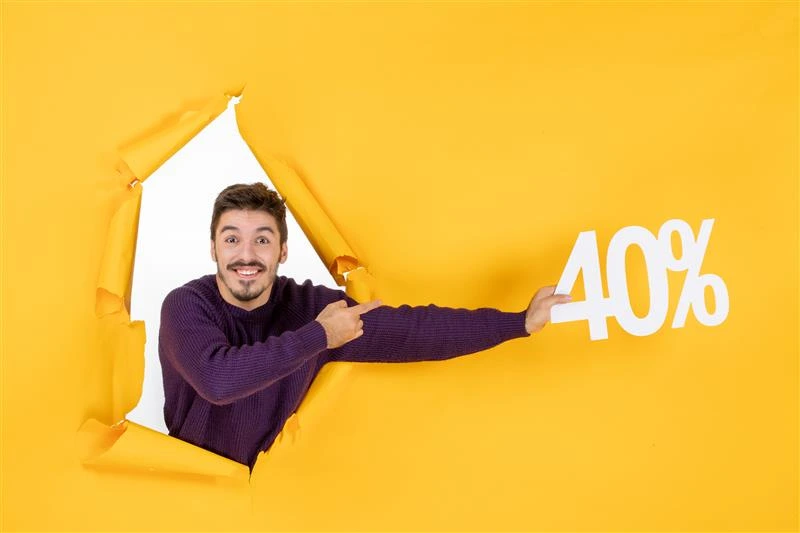

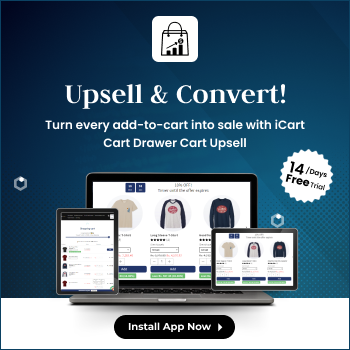
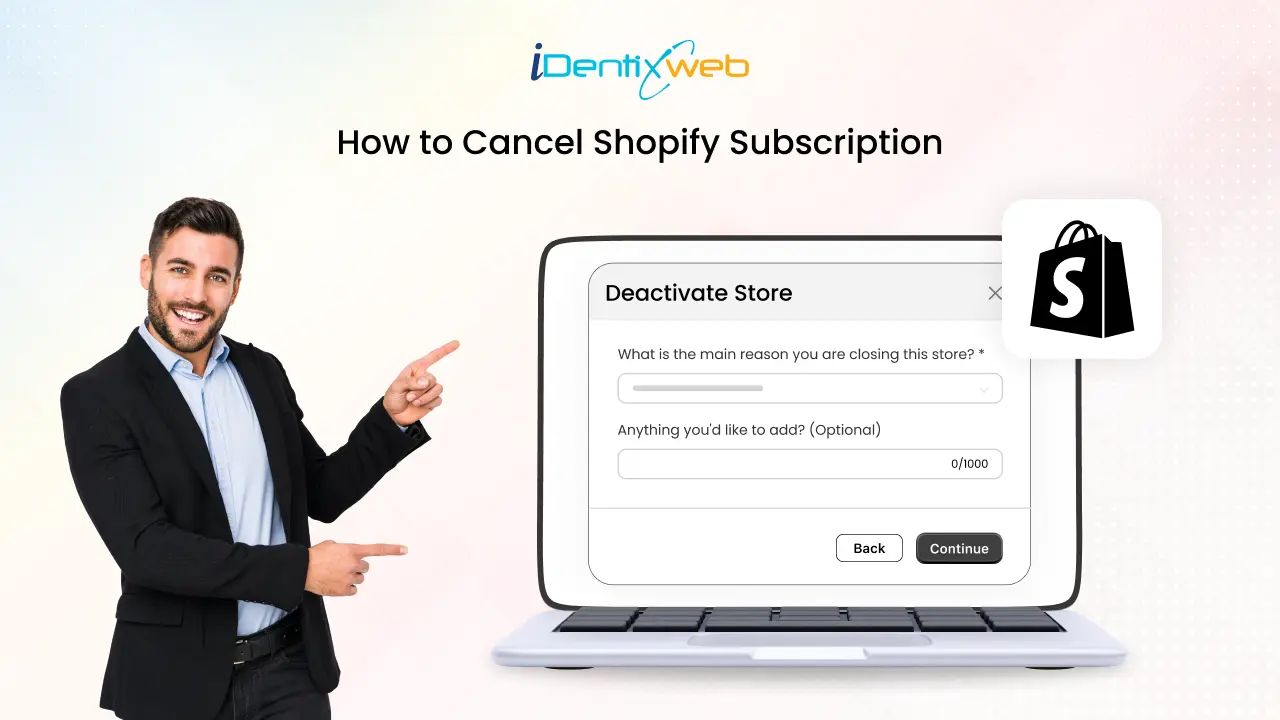
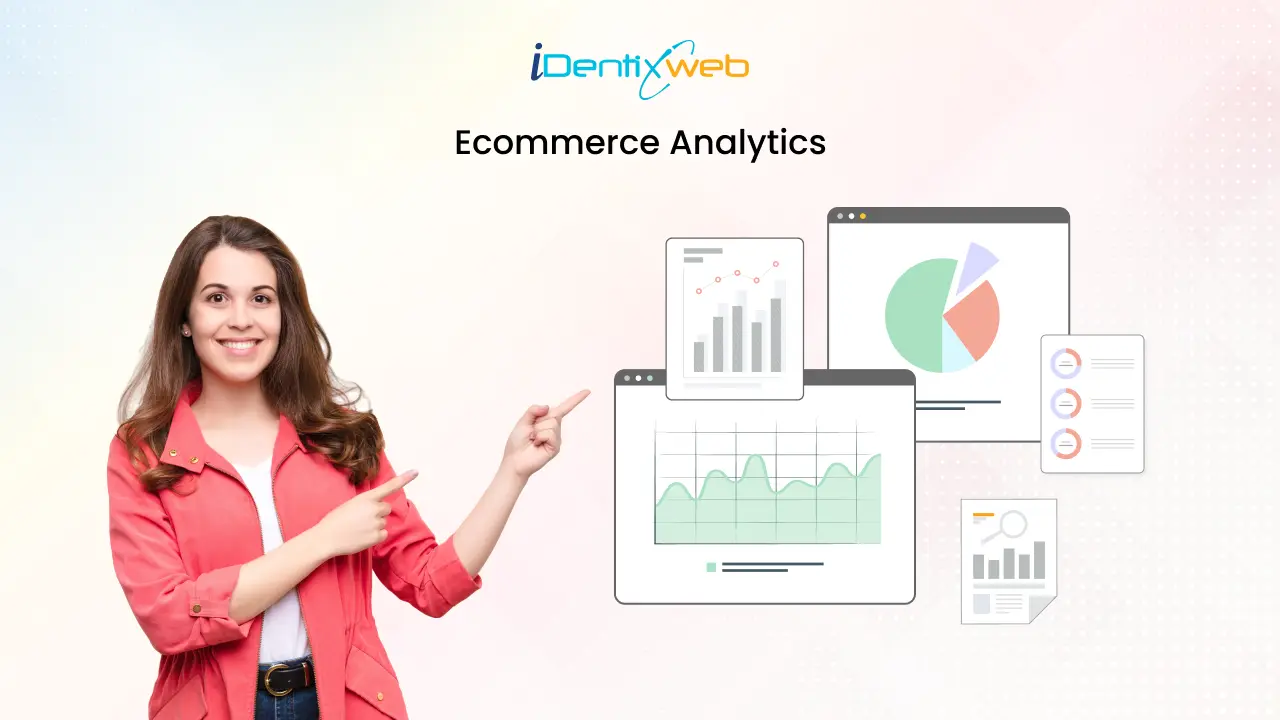

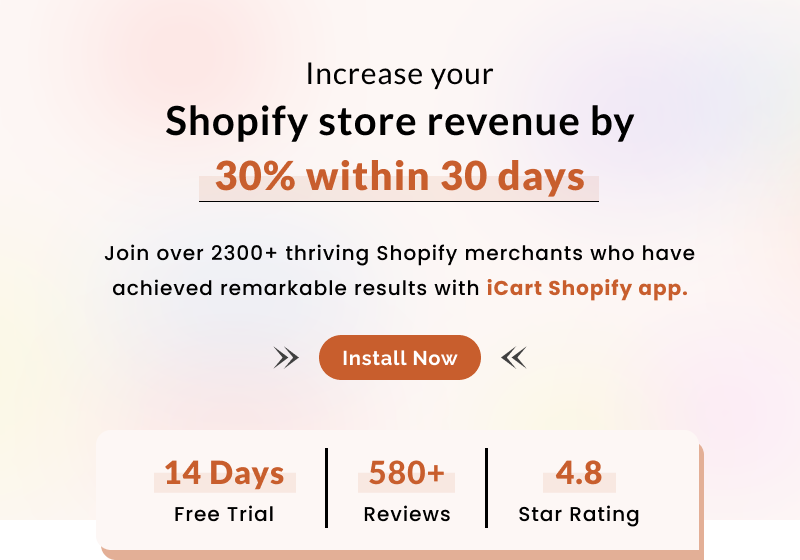
About the author
Bhavesha Ghatode
Explore Content with Bhavesha, a passionate and dedicated technical content writer with a keen understanding of e-commerce trends. She is committed to sharing valuable insights, practical assets, and the latest trends that can help businesses thrive in a competitive environment.